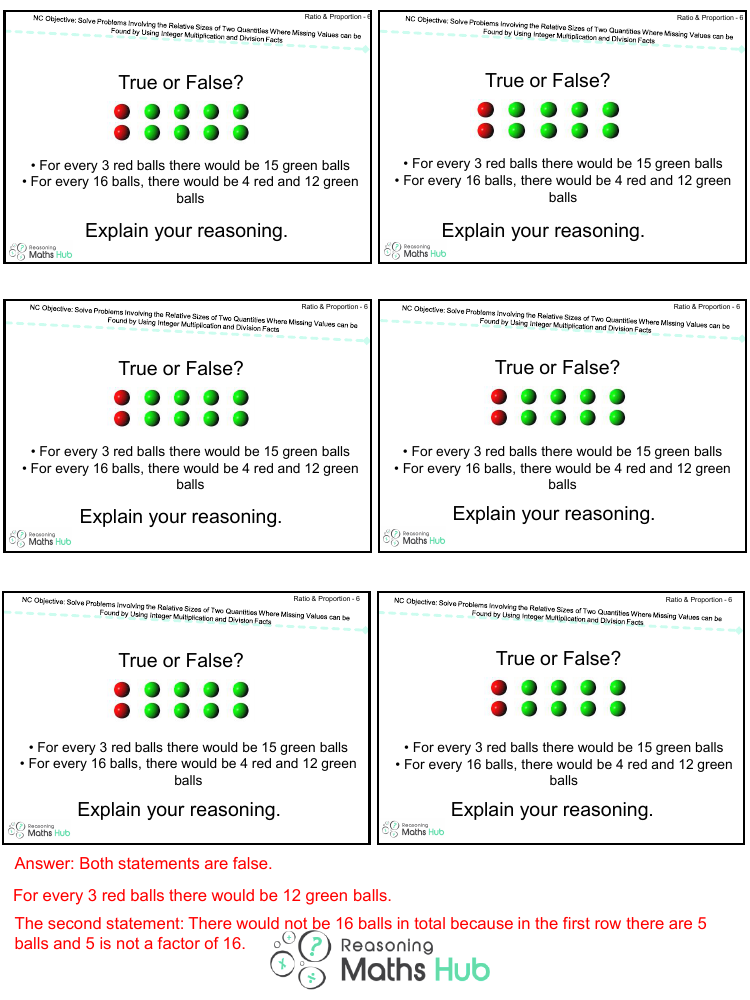Solve Problems Involving the Relative Sizes of Two Quantities - Reasoning

Maths Resource Description
When evaluating the truthfulness of statements involving the relative sizes of two quantities, specifically the ratio of red to green balls, careful analysis of the numbers and their relationships is required. The first statement suggests that for every 3 red balls, there would be 15 green balls. This implies a ratio of 3 red balls to 15 green balls, which simplifies to a 1:5 ratio. However, upon further examination, it is clear that the correct ratio should be 1:4, meaning for every 3 red balls, there should be 12 green balls, not 15. Therefore, the first statement is false.
The second statement posits that in a total of 16 balls, there would be a distribution of 4 red and 12 green balls. This statement maintains the 1:4 ratio previously identified (4 red balls to 16 balls in total gives a ratio of 1:4 when simplified, matching the 12 green balls to the 4 red balls). However, the initial claim that the first row contains 5 balls, which is not a factor of 16, indicates a discrepancy in the total number of balls. Since 5 is not a factor of 16, there cannot be an equal distribution of rows with 5 balls each to make up a total of 16 balls. Consequently, the second statement is also false. The correct ratio of red to green balls is 1:4, and the total number of balls should be a multiple of the sum of the parts of the ratio, which in this case is 5 (1 part red + 4 parts green), not 16.